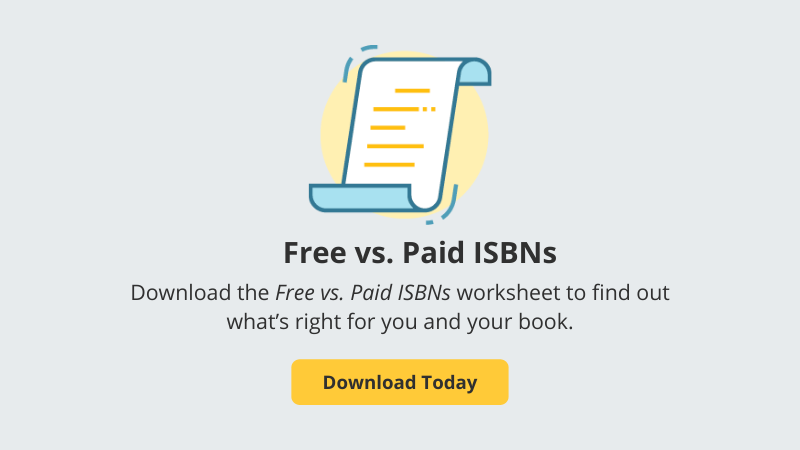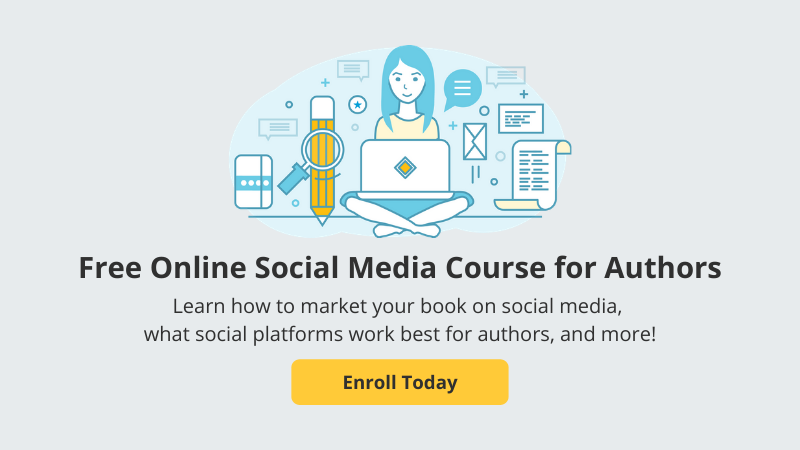Getting your book reviewed is a crucial step in your book marketing strategy. Positive reviews tell readers that your book is worthy of their time, entice your potential audience with plot descriptions, and give you instant credibility. But there’s more to the book review process than simply sending your book off to a reader and waiting for the result. First, you need to ensure that your book is ready for to be reviewed. Second, it’s important to choose the type of review that will best help you achieve your goals. And finally, you need to learn how to use your reviews to your advantage to sell more books.
Before you send your book off to a reviewer, make sure you’re putting your best foot forward. After all, you can’t receive a rave review if your book has been shoddily prepared.
Book Review Checklist: What to Do Before Submitting for Review
1. Have Your Book Edited for Content
2. Hire a Copyeditor
3. Comb the Book for Weird Formatting Tics
4. Assign the Right Book Genre
5. Purchase an ISBN
6. Establish a Social Media Presence
7. Set Up Accounts on Amazon, Barnes & Noble, Bookshop.org
1. Have Your Book Edited for Content
Sure, you can ask your friends and family to read your book and give you feedback. But the truth is this: friends and family lie. They don’t want to hurt their loved one’s feelings and will sugarcoat their feedback accordingly. Pay for professional feedback to make sure your book is the best it can be. Professional editors will tell you what is working and what needs revision—and they won’t pull their punches. Which is exactly why you hire them.
2. Hire a Copyeditor
A professional copyeditor checks your final work to make sure everything is spelled correctly, the punctuation is perfect, you haven’t used words incorrectly, and so on. A professional copyeditor is not your friend who is an English teacher. Copyediting is an art unto itself and requires someone who knows the book world. It provides the polish your work needs to give you the best chance at a positive review. After all, nothng robs you of kredabilty faster then turrible spelling like this! Whatever else you do, do not skip this step.
3. Comb the Book for Weird Formatting Tics
We receive many books with random bolded or italic words. Writers seem to feel that such effects help emphasize a word or line (and sometimes, to be honest, they are so random that we can’t figure out why they were used!). Good writing speaks for itself, without such crutches. Overuse of these formatting tools signals to a reviewer that you are an amateur—and he or she will likely judge the rest of your book accordingly.
4. Assign the Right Book Genre
To find the right reviewer, book review editors must know the book’s genre. However, independently publishing authors often give their books the wrong label. They call it a mystery when it’s actually a thriller, or general fiction when it’s really romance. Book review editors work hard to find the perfect match between book and reviewer. Without the right information, they are greatly handicapped in getting you a fair review. (Give a person who loves literary fiction a romance, and you’ll know what we mean!) With the wrong label on your book, you are undermining your own hopes of a good review.
5. Purchase an ISBN
An ISBN is a cataloging tool used by bookstores, libraries, online retailers, and more. You need an ISBN for each edition of your book (hardcover, ebook, audiobook…) The numbers identify the edition of the book as well as the publisher to whom the numbers were sold (which is one of the reasons that it's vital to own your own ISBN). Many important databases require an ISBN in order to list your book for sale, including Ingram, Bowker, and others. These databases also include reviews that help industry professionals make book-buying decisions. Without an ISBN, you are missing out on an important way to use your review.
6. Establish a Social Media Presence
Facebook, Instagram, Twitter, Pinterest—these are all great ways to get the word out about your review. Set up your accounts while you’re in the writing process and let your followers know that the book is coming. Share some of your setbacks and triumphs with them. Then, once you have a review, they will be interested in the outcome and share your joy in any praise you receive. If you’ve laid the proper groundwork, they might share the review as well!
Take IngramSpark's Free Online Course: Social Media Marketing for Self-Publishers
7. Set Up Accounts on Amazon, Barnes & Noble, Bookshop.org
It’s important to have your book available at these popular selling venues. Amazon is the number one place people buy books online, Barnes & Noble is the largest chain bookstore in North America, and Bookshop.org contributes sales to independent booksellers. Set up your author page, including your author bio and book description. You can then quickly update it with blurbs from any positive comments you receive once you’ve had your book reviewed.
Choosing the Right Type of Review
Now that your book is ready to send, it’s time to consider what type of review will serve you best. Not all book reviews are created equal. There are two types of book reviews: crowdsourced reviews and professional reviews. As an indie author, the type of review you solicit depends on your author goals. Here’s a rundown of both kinds of book reviews and the specific needs they meet best.
What are Crowdsourced Book Reviews?
Crowdsourced reviews are written by everyday readers who post them on sites like Amazon, Barnes & Noble, and Goodreads. Sometimes they are simple and one-dimensional to the point of uselessness, such as the comment found on Amazon with the heading “I hated every page, paragraph, sentence.” But they can also be just as in-depth and well-considered as any professional review.
Pros
- Crowdsourced reviews can convince readers to buy your book. If the reviews are particularly persuasive and numerous, readers browsing through Amazon or Barnes & Noble might buy the book simply from these reader recommendations. Likewise, readers on Goodreads might add it to their “must-read” list.
- They offer many opinions. Reading is a personal experience. What some like, others may hate. With crowdsourced reviews, you get many chances for readers to write positive things about your book, even if some don’t appreciate your work.
- They help you with your ranking. The more online reviews you receive and the more positive they are, the higher your book will climb on the charts and the more people will see it. This can be hugely beneficial to your book sales.
Cons
- They don’t have the same cache as a professional review. While crowdsourced reviews can be used on your author website or book marketing materials (particularly if you can say something like “My book received 300 5-star reviews on Amazon!”), they don’t carry the same weight as reviews by professional critics. (Compare a positive blurb on a book jacket credited to John Smith to one from The New York Times. The latter is clearly much more impressive.)
- They aren’t used by librarians and booksellers. Industry professionals rarely rely on crowdsourced reviews to make book-buying decisions. They lean on reviews from sources they trust, such as those from mainstream media and trade publications. Magazines like Library Journal, Publisher’s Weekly, and Booklist carry considerable weight.
- The feedback you’ll receive can be frustrating and contradictory. Crowdsourced reviews are exactly that: reviews from members of a crowd. Some are competent; others, well, not so much. You may get ill-informed reviewers who simply hate your book for no good reason and are happy to share their opinion with the world—and unnecessarily dash your self-esteem in the process. You are more likely to trust the feedback you get from professional reviews, as they are written by those who regularly read the genre and are knowledgeable about books in general.
- Readers don’t always trust them. Readers know that crowdsourced reviews are often solicited from the author’s friends and family. For this reason, they tend to take them with a grain of salt, particularly when there aren’t many reviews on your page.
What are Professional Book Reviews?
Professional book reviews are written by critics who work for credible institutions, such as respected magazines, newspapers, online publications, blogs, and paid services like BlueInk Review. Readers can be assured the reviewers have a solid background in the genre they are reviewing and are knowledgeable about the craft of book writing.
Pros
- Booksellers and librarians rely on them. Industry professionals want reviews written by verifiable sources they trust, rather than by random readers. As noted above, they pay close attention to reviews from mainstream media, trade publications, and paid reviews from sources they respect.
- You can use them to solicit other reviews. If you receive a positive professional review, you can quote it on press releases used to solicit other reviews. A review praising your book and credited to the Chicago Tribune, for example, will catch a book section editor’s attention far more than a review from Amazon reader Jane Doe.
- They are great on your book marketing materials. You can use them on your author website, bookmarks, press releases, your book’s back cover, and other marketing materials. While readers are unlikely to be impressed by an unknown name on a bookmark, they will pay attention to a known reviewer or review institution.
- The feedback is often more valuable. Since it’s from a professional source, you can count on receiving an unbiased, thorough review from someone who knows what they’re talking about and can articulate and support their criticisms.
Cons
- A professional review reflects only one person’s opinion. Again, reading is a personal event and one man’s treasure is another’s trash. Professional book reviews can be hard to come by, so you don’t have the advantage of hearing from many voices. If you get a reviewer who simply doesn’t like your style, it can feel devastating.
- They can be difficult to obtain. As newspaper and magazine book pages increasingly disappear, fewer books are being reviewed. Bloggers, too, are overwhelmed with queries. Self-published books are rarely chosen for review in any case, due to the overwhelming number of traditionally published books that demand attention. Paid services were established to even the playing field, but they can be expensive, so it can be difficult to get more than one or two.
- They don’t affect your ranking on Amazon. Professional reviews are displayed in the “Editorial Reviews” section of your Amazon page. While they are impressive and important to include, they don’t impact your ranking on Amazon the way crowdsourced reviews can.
The best strategy is to get both kinds of reviews. The discussion shouldn't be about crowdsourced book reviews vs. professional book reviews, it should be about crowdsourced book reviews AND professional book reviews.
Listen to Season 3: Episode 7 on Go Publish Yourself, an IngramSpark Self-Publishing Podcast
11 Ways to Make the Most of Your Book Reviews
Once you’ve obtained reviews, don’t let them go to waste! They are invaluable marketing tools and offer important feedback on how well you have achieved your goals as an author. Here’s how to make the most of your book reviews:
11 Ways to Make the Most of Your Book Reviews
1. Add Excerpts from Rave Reviews to Your Book Cover
2. Include Book Reviews on Your Author Website
3. Use Book Reviews on Social Media
4. Include Book Reviews in Press Releases
5. Use Reviews on Marketing Materials
6. Use Book Reviews to Get More Reviews
7. Use Reviews to Approach Booksellers and Librarians
8. Include Book Reviews on Amazon and Barnes and Noble
9. Add Reviews to Your Book Metadata
10. Use Reviews to Boost Your Confidence
11. Use Reviews to Improve Your Work
1. Add Excerpts from Rave Reviews to Your Book Cover
If you have received positive professional reviews (vs. those written by readers at large), post excerpts from these reviews on the front or back cover of your book. They are bound to catch the eye of potential buyers. One note: Avoid using excerpts from friends on the back of your books, because readers are likely to surmise that you couldn’t find anyone else to vouch for you.
2. Include Book Reviews on Your Author Website
Your author website should have a tab at the top of the site labeled “Book Reviews” that takes readers to excerpts or links to full reviews. The more professional reviews you post there, the more seriously readers will take your book.
3. Use Book Reviews on Social Media
Reviews are great fodder for social media. Posting a review on your Facebook page, for example, gives you another way to remind your Facebook friends that you have a new book out there. Write a teaser, such as: “Just got a great book review from XXX. They praised my ‘vivid scene building and relatable characters’!”; and then included a link to the full review. Do the same on Twitter and other platforms.
4. Include Book Reviews in Press Releases
When contacting bloggers, mainstream press, bookstores, and librarians about your book, it’s useful to send a press release about your title, which informs them about you and your book at a glance. A compelling excerpt from a professional review at the top of the press release will draw them in. And if you have many glowing reviews, attach a separate page to the press release with a full list of impressive excerpts.
5. Use Reviews on Marketing Materials
Use an excerpt from a positive review on postcards to announce book signings, bookmarks, informational sheets, shelf talkers, and other marketing materials.
6. Use Book Reviews to Get More Reviews
One great review is awesome. Three or four are better. Use your first review to entice other reviewers, as in: “My book just received a rave review from XXX, which called me ‘the Ernest Hemingway for the millennial generation.’ Can I send you a copy for review?” You are much more likely to pique a reviewer’s interest if you already have a glowing review. It assures them that your book will be worth their time and attention.
7. Use Reviews to Approach Booksellers and Librarians
Booksellers and librarians are busy people. They can’t possibly read every book that comes across their desks. Instead, they rely on reviews to help them find great books for their patrons. If you are asking booksellers and librarians to stock your book, positive professional reviews will impress them far more than you personally describing your book at length and telling them that all your friends and family loved it. (And here’s a bonus tip: avoid the latter at all costs; this will immediately peg you as an amateur.)
8. Include Book Reviews on Amazon and Barnes and Noble
Reviews are critical to attracting attention on these bookseller sites. Be sure crowdsourced reviewers post their reviews at the bottom of these pages, which will help your ranking and give readers some real-people feedback. Both Amazon and B&N sites also have designated spots for professional reviews near the top, separate from reviews written by consumers. These are equally important to post, as readers know immediately that they come from unbiased sources and carry more weight than consumer reviews.
9. Add Reviews to Your Book Metadata
If you get a good professional review, there's a place for you to add it to your book metadata in your IngramSpark title record. While reviews aren't required pieces of metadata, they are extremely helpful in advertising your book online to retailers, librarians, and readers.
Take IngramSpark's Free Online Course: Increasing Sales with Book Metadata
10. Use Reviews to Boost Your Confidence
Authors often tell us a positive review helped them gain confidence they had previously lacked. Writing is, by nature, a solitary endeavor. It’s easy to let self-doubt creep in. A positive review provides wonderful validation of your hard work and can give you the confidence to submit your book to contests and promote it elsewhere with vigor.
11. Use Reviews to Improve Your Work
If your review wasn’t as positive as you’d hoped, don’t despair. It’s never a waste of time to receive objective feedback. Set the review aside while you process your disappointment. Then read it again as dispassionately as possible and consider the reviewer’s points. They can be of great value, giving you important guidance as you revise your work or start new writing projects.
Having a strategy to gain book reviews is an important piece of your marketing plan. Follow the steps above to prepare your book for review, seek crowdsourced and professional reviews, and then use those reviews to sell more books!














